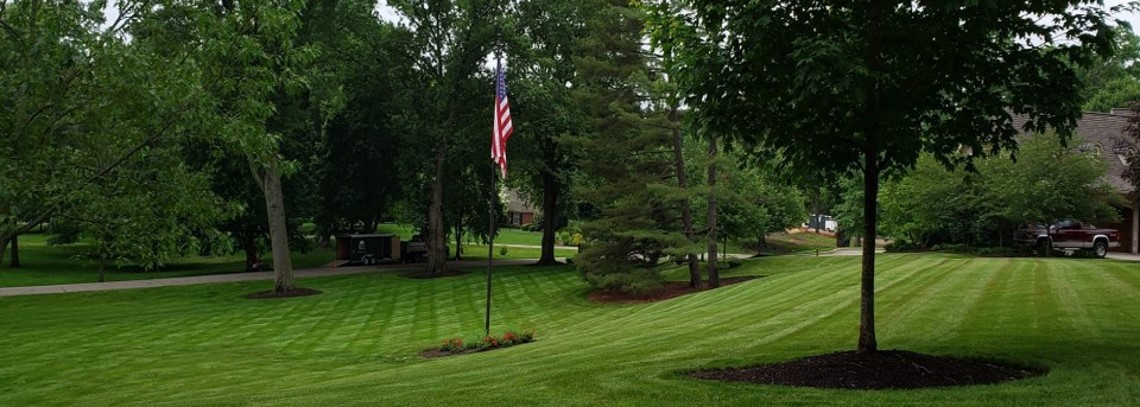New/Repaired Lawn Care
WATERING
Seeded lawn: You should water a seeded lawn daily. A lawn installed during the summer will require more frequent watering than one installed in the spring or fall. Once you’ve started a watering schedule, don’t reduce or interrupt your schedule until you’ve established the lawn.
Water seeded lawns for approximately 9 to 12 minutes one-to-two times every day for the first two weeks and one-to-two times every other day for the third week. Water long enough to allow a one-to-two inch moisture depth for seed germination.
Sodded lawn: Immediately begin watering your sodded lawn. It’s critical to water at least twice per day until the roots have established. After approximately two to three weeks, you can reduce your watering schedule.
Water sodded lawns two times per day for the first two-to-three weeks, watering long enough for a three-inch moisture depth. (See how to determine water depth here.) After the third week, water with less frequency while maintaining the same depth of watering.
During the first three-week establishment period, keep seeded and sodded lawns evenly moist but not muddy. Adjust your watering pattern if the ground appears to dry out, the grass starts to turn yellow or brown, and/ or there is considerable rainfall.
Please note: Your lawn may show the above signs of stress from heat or malnutrition even months after establishment. Proper lawn care, especially seasonal fertilization and continual watering, is vital to maintaining a healthy lawn.

STRAW & STRAW NETTING CARE
Seeded lawn installations include a topdressing of straw or, more often, straw netting. This topdressing helps combat natural elements, such as wind, water and animals—elements that can shift seeds and may lead to bare patches. It also retains moisture, helping to prevent seedlings from drying out. Straw netting is preferred over straw because it is held to the ground with sod staples, making it unlikely to blow away in heavy wind.
Neither material requires much care. Both straw and straw netting are photo-biodegradable, which means sunlight breaks them down over time. Don’t remove your straw netting. This could tear up new grass seedlings and damage your yard. If you notice areas where the netting is loose, use a box cutter to remove the netting there as it could be a hazard when mowing. It’s also acceptable to leave sod staples in your yard since they’re thin and easily covered by your new lawn.

MOWING
Seeded lawn: Don’t mow a newly seeded lawn until it reaches a height of at least three inches.
Sodded lawn: Only mow a sodded lawn when it’s established and has roots, at about three to four weeks. Test by tugging gently on the sod. When you feel resistance from the roots, it’s beginning to establish.
Only mow new or repaired lawn areas after the lawn has adequate time to dry out and firm up.
Let us handle your lawn and landscape care. Rice’s Estate Landscape Management offers efficient, full-service landscape maintenance. Contact us today to get started.




 5-Star Houzz Reviews
5-Star Houzz Reviews
 40+ Ohio Landscape Association Awards
40+ Ohio Landscape Association Awards
 80+ Years of Service
80+ Years of Service
 ONLA Award Recipient
ONLA Award Recipient
 NALP Proud Member
NALP Proud Member